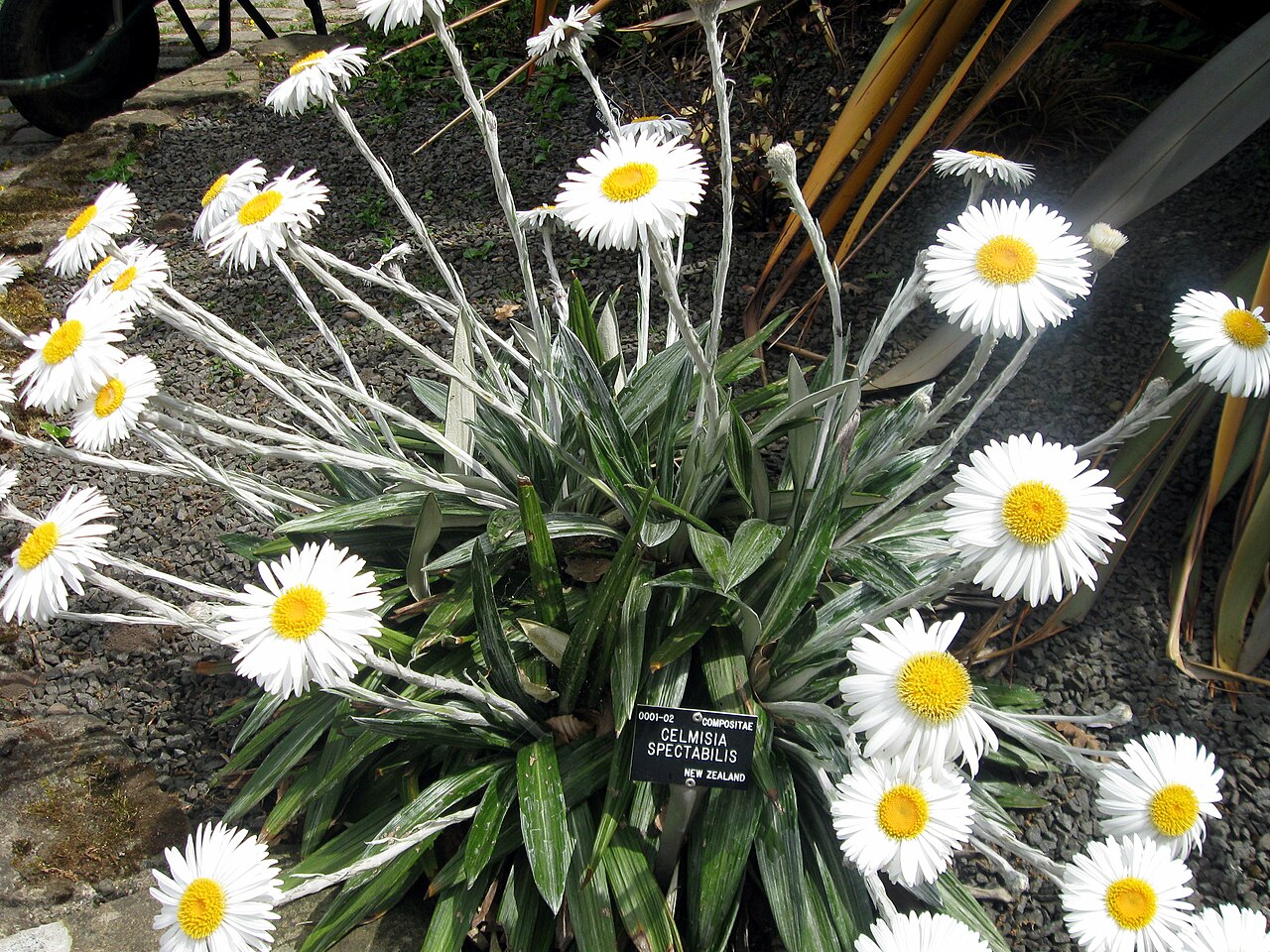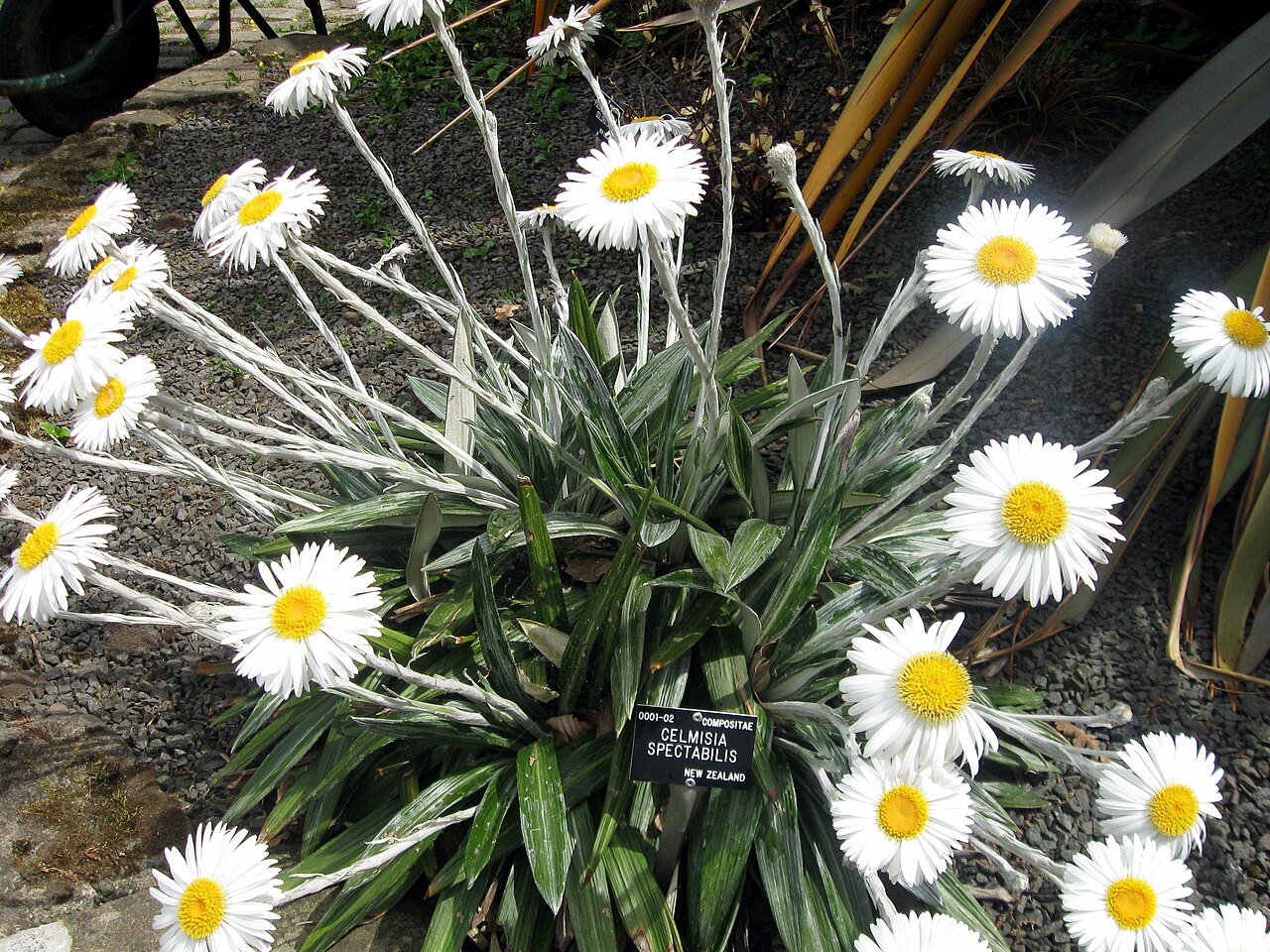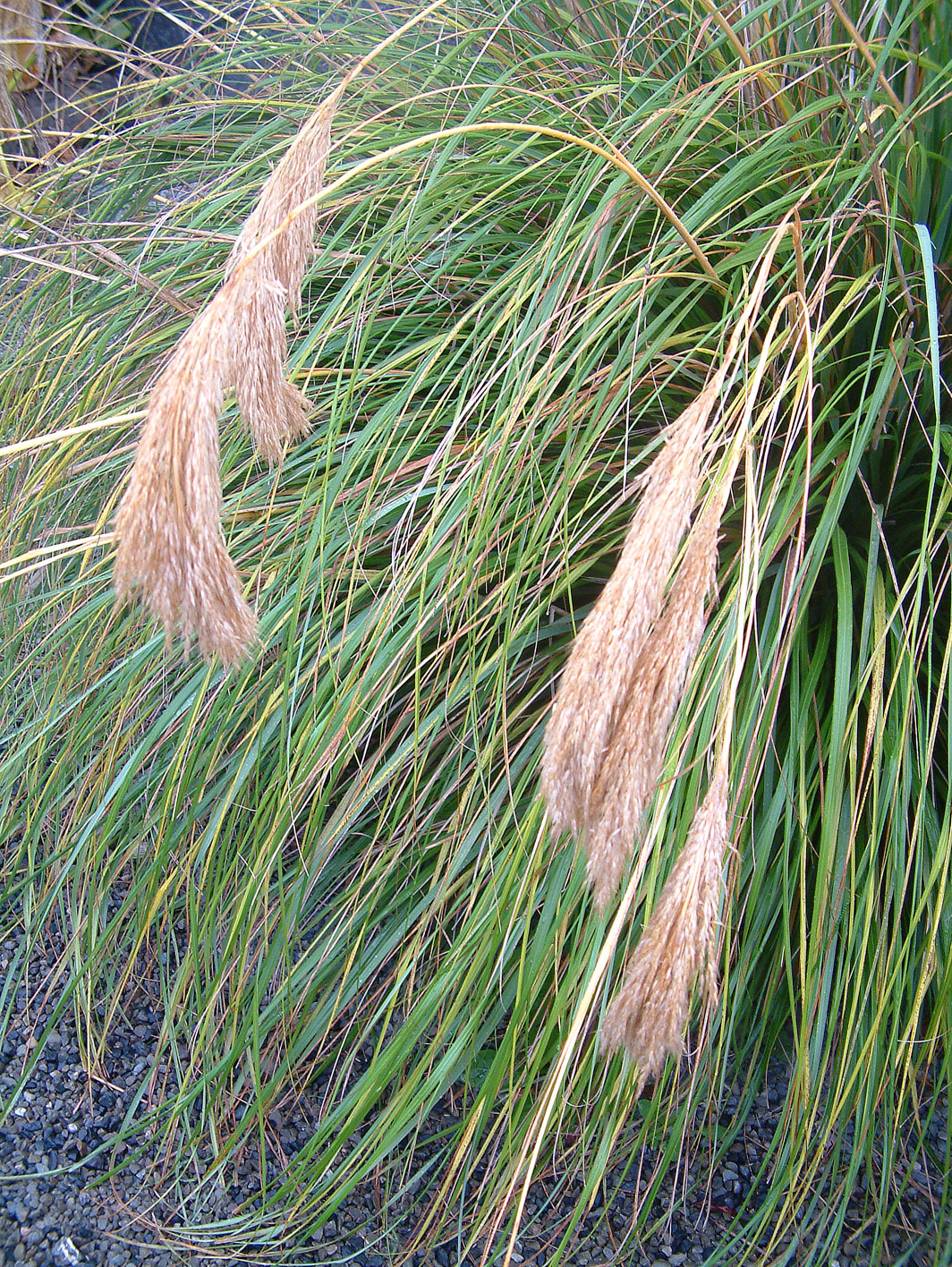Cotton Plant
Celmisia spectabilis
The Cotton Plant is a striking alpine daisy native to New Zealand's mountain regions. Known for its distinctive silvery-white leaves and large white daisy flowers, it forms impressive clumps in alpine and subalpine environments. This hardy plant is well-adapted to harsh mountain conditions and adds a dramatic accent to rock gardens and alpine plantings.

Image credit: Wikipedia
Quick Facts
| Height | 30-50cm |
|---|---|
| Water Needs | Moderate |
| Light | Full sun to partial shade |
| Frost Tolerance | High |
| Growth Rate | Slow |
| Lifespan | 10+ years |
Climate Best Suited To
Cotton Plant is naturally adapted to alpine and subalpine environments, typically found at elevations between 800-1800m. It thrives in cool, exposed locations with high rainfall and excellent drainage.
| City | Climate Suitability |
|---|---|
| Whangārei | Challenging |
| Auckland | Challenging |
| Hamilton | Challenging |
| Tauranga | Challenging |
| Rotorua | Moderate |
| Gisborne | Challenging |
| New Plymouth | Moderate |
| Napier | Challenging |
| Whanganui | Moderate |
| Palmerston North | Moderate |
| Wellington | Moderate |
| Nelson | Good |
| Christchurch | Good |
| Dunedin | Good |
| Queenstown | Ideal |
Growing Requirements
Soil
- Well-draining, gritty soil
- Alpine or rock garden mix
- pH 5.5-6.5
Light
- Full sun to light shade
- Morning sun and afternoon shade in warmer regions
- Protection from intense midday sun
Water
- Regular moisture when establishing
- Moderate drought tolerance once established
- Good drainage essential
Uses & Significance
Garden Uses
- Rock gardens
- Alpine gardens
- Container plantings
- Accent plant
- Foliage contrast
Cultural Significance
- Traditional medicinal uses
- Symbolic of alpine environments
- Part of New Zealand's mountain flora identity
Ecological Value
- Adapted to harsh alpine conditions
- Stabilizes alpine soils
- Habitat for specialized insects
Seasonal Care Calendar
Spring
- New growth begins
- Clean up winter damage
- Apply slow-release fertilizer
- Monitor for slugs
Summer
- Flowering period
- Keep soil cool with mulch
- Water during dry spells
- Remove spent flowers
Autumn
- Reduce watering
- Clean up dead foliage
- Prepare for winter
- Apply gravel mulch
Winter
- Minimal watering needed
- Protect from winter wet
- Monitor drainage
- Remove damaged leaves
When to Prune and How Much
Cotton Plant requires minimal pruning but benefits from regular maintenance:
- Remove dead or damaged leaves throughout the year
- Cut back spent flower stems after blooming
- Trim away any diseased foliage promptly
- Maintain plant shape by removing straggly growth
Always use clean, sharp tools and make cuts close to the base of the plant.
Planting Guide
When to Plant
Spring is the ideal time to plant Cotton Plant, after the risk of severe frost has passed but before summer heat arrives.
Site Selection
- Choose a well-drained location
- Full sun with cool root zone
- Protected from hot afternoon sun
- Good air circulation
Planting Procedure
- Prepare well-draining soil mix
- Dig hole twice the width of root ball
- Plant at same level as container
- Backfill with gritty soil mix
- Water thoroughly
- Apply gravel mulch
Propagation Methods
From Seed
- Collect seeds when heads turn brown
- Sow fresh in autumn
- Use well-draining seed mix
- Keep cool and moist
- Germination in 4-6 weeks
Division
- Divide established clumps in spring
- Ensure each division has roots
- Replant immediately
- Keep well-watered until established
Cultural History
Cotton Plant has been significant in New Zealand's natural and cultural heritage:
- Traditional indicator of alpine environments
- Used as a marker for seasonal changes
- Important in early botanical exploration
- Featured in alpine botanical illustrations
- Valued in early European garden collections
Pests & Diseases
Common Pests
- Slugs and snails
- Leaf-mining insects
- Root weevils
Disease Prevention
- Avoid overhead watering
- Ensure good air circulation
- Remove dead foliage promptly
- Monitor for fungal issues in wet conditions
Bonus Tip
Create a stunning alpine display by combining Cotton Plant with other native alpine species like Raoulia (vegetable sheep) and Aciphylla (speargrass). Use rocks and gravel to create natural-looking planting pockets and ensure excellent drainage. The silvery foliage of Cotton Plant provides beautiful contrast against darker rocks and companion plants.




